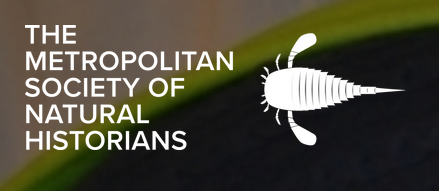On June 12, a calm early summer evening, The Metropolitan Society of Natural Historians met with our ever-wonderful Dottie from NYC Audubon at Big Egg Marsh in Queens to count and tag horseshoe crabs (Limulus polyphemus).
Horseshoe crabs first appeared about 450 million years ago and fossils similar to modern horseshoe crabs are as old as 230 million years. A wonderful fossil, along with its footprints, can be found in the American Museum of Natural History (in the Hall of Ocean Life). However, during the event, we were looking for the living representatives, which, despite what their name indicates, are much more closely related to spiders and their allies than to crabs. Dottie, greeting us at the parking lot, explained the difference between males and females, males evolved their second paired appendage into a “boxing glove”, which they use to cling onto the much larger female during mating season. Parts of their walking legs partially evolved into mouthparts, allowing them to eat soft animals like marine worms. Their large compound eyes, along with a few other single eyes, allow them to see the underwater world, which they inhabit for most of the year. However, in late spring and early summer, they leave the depths of the ocean and return to their mating grounds: the sandy beaches along the east coast of the North America from Maine to the Gulf of Mexico. Here, guided by the moon, females arrive to the beaches to lay many eggs (up to 80,000). Males, clinging onto the female, compete with each other to fertilize the eggs as she releases them. Thus, any large female is usually accompanied by a few males, who will try their luck. No worries if they fail in a year, they have another. It is estimated that some horseshoe crabs can live up to 40 years!
After passing through a mosquito paradise (“I have never experienced so many mosquitoes in NYC!”, I was told), we finally entered the beach. Before tagging, we did a transect count – using a plastic frame quadrant, which we used at a given distance-interval to count how many horseshoe crabs were present. Our members, along with another group sent by the NYC Audubon Society, did not hesitate and waded through the waters filled with algae, coconuts, and other items better not to be described. We are in NYC after all! After doing the transect, we finally set up a station next to the bridge and brought horseshoe crabs, placed them on a tarp and added a tag by drilling a small hole into the left side of their carapace. First timers were as excited as old timers (like I) - a natural spectacle in our midst. While we have seen more horseshoe crabs before, we were certainly not disappointed. Within a short amount of time, we tagged fifty horseshoe crabs, and found a tagged specimen, which must have been tagged several years ago. Not bad! Dottie indicated that the well-known mass spawning seems to occur earlier every year, possibly a result of climate change. And indeed, the ocean was pleasantly warm. No one seemed to be cold, only full of energy.
After the annual group picture, we looked one more time at the ocean, saw the horseshoe crabs and the almost full moon over us. Like so many before us, humans and non-human animals alike, we were able to observe an ancient ritual, million of years old - horseshoe crabs leaving the depth of the oceans to lay their eggs. Eggs, which are also a critical food source to many shore birds. And, if nature wanted to remind us, a lonely skimmer (Rynchops niger) flew close to the water surface, skimming the water for prey with its lower mandible. A quiet moment.
Thank you, Dottie, as always for allowing us to join you and “your” horseshoe crabs. A happy return after the long break due to the pandemic.
To view more photos from this event, please visit our gallery. All photo credit goes to D. Kukula (https://www.danielkukla.com/).


